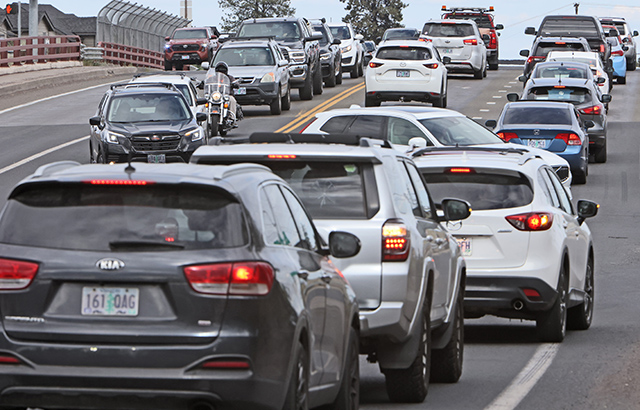Where people see ‘personality of the rider and the horse’
Published 12:00 am Friday, April 13, 2018
The pair glides across the arena, showing off intricate moves and footwork in perfect synchronization with the music.
Olympic figure skating? Ballroom dance? No, it’s the dressage freestyle.
Trending
Eighteen of the top equestrians in the world will be in Paris through the weekend at the FEI World Cup for the dressage final, an event that showcases the freestyle to music.
The World Cup will also have the show jumping final, where American McLain Ward will defend his title against 38 other riders. FEI, the International Federation for Equestrian Sports, will stream the events live.
“I love, love showing it because the stands are always packed, and the people are always excited,” said Laura Graves, one of two American dressage riders who will be performing. Graves competes with her 16-year-old Dutch Warmblood, Verdades, known around the barn as Diddy.
In the freestyle, the horse and rider perform a sequence of required movements set to music that show technical mastery, but they can do them in any order. A panel of judges awards scores from 0 to 10 for each figure, based on the quality of execution, with certain movements earning double points.
Equally important is the artistic score, factoring in the choreography with the music. The end result for the audience? The horse and rider appear to be dancing.
The freestyle is “probably the most exciting for the nondressage person.” said Hallye Griffin, managing director of dressage for the U.S. Equestrian Federation. “It’s a way to really show the personality of the rider and the horse.”
Trending
Orchestral arrangements are common, but any type of music is allowed for the programs, which last about six minutes. Most combine several pieces of music to match the three gaits: the walk, the trot and the canter.
“You have to find the music that your horse likes,” Francis said. “I messed around with a lot of music for Danilo because he was oddly sound sensitive. He would get very nervous with certain music.”
Francis has worked with equine choreographer Marlene Whitaker for several years to create musical programs for her horses. With Danilo, they tried several styles, and he settled down with the a cappella piece.
“I was looking for something light that would not crash and bang and surprise him,” Whitaker said. “This is the one initially that we thought was least threatening for him.”
Francis introduced Danilo to the freestyle slowly to allow him to adjust to the sound and charged environment.
“So the first year we did it a little bland. And then the next year we added in a few more little bits of piano and a clash or two here and there. You know, something to touch it up and make it a little lively,” Francis said.
Graves said she loved showing the freestyle, but she hated practicing and making them. She has worked with Verdades since he was imported to the United States at 6 months and has done all of his training, including two previous World Cup performances and a team bronze at the Rio Olympics in 2016.
Graves was on a tight budget in her early years of performing at the international level. But after the World Equestrian Games in 2014, “we sat down and I said, ‘OK, this horse really is a star, and we need to find a piece of music that’s his,’” she said.
She worked with Terry Ciotti Gallo, a freestyle choreographer, to create a new musical arrangement and routine for the duo before the 2016 Olympics in Rio.
While the music is put together to sync with the horse, the equine partner also learns the routine.
“I practice it enough so they’re a little bit familiar with it,” Francis said. “Before I ride it in a competition I practice it maybe a few more days so that they’re kind of familiar and so that I know it and then I listen to the music until it drives me crazy, so that I know every single little tiny transition and beat in it.”
Graves and Verdades finished second at the 2017 World Cup behind Germany’s Isabell Werth and her mare, Weihegold OLD.








